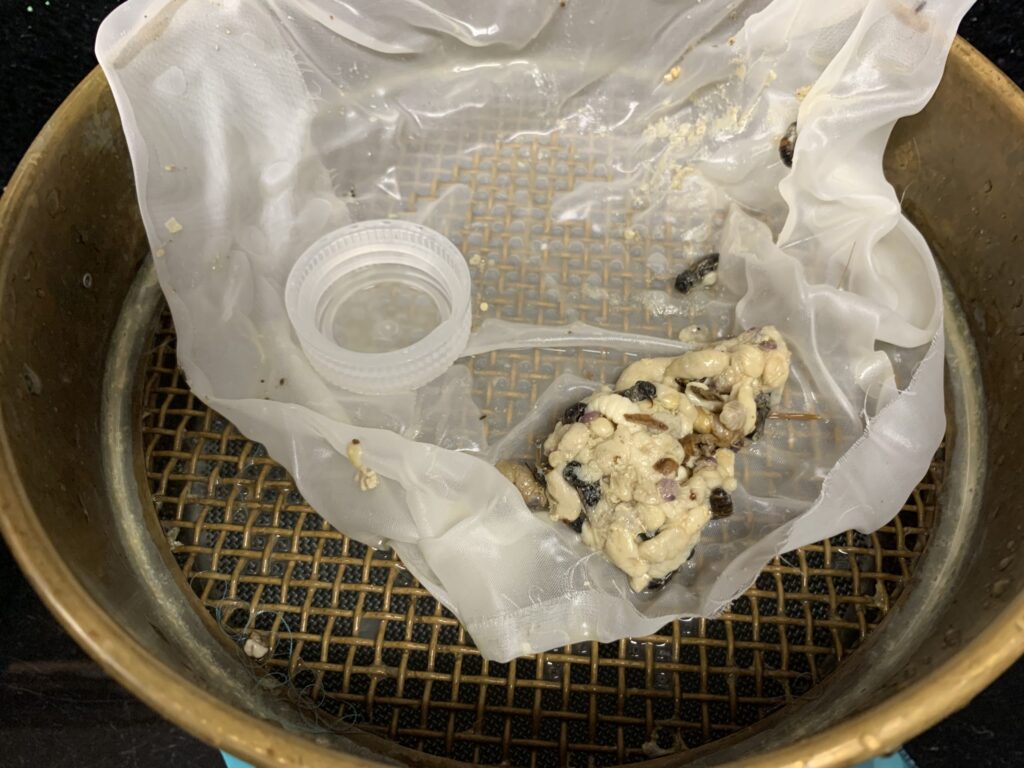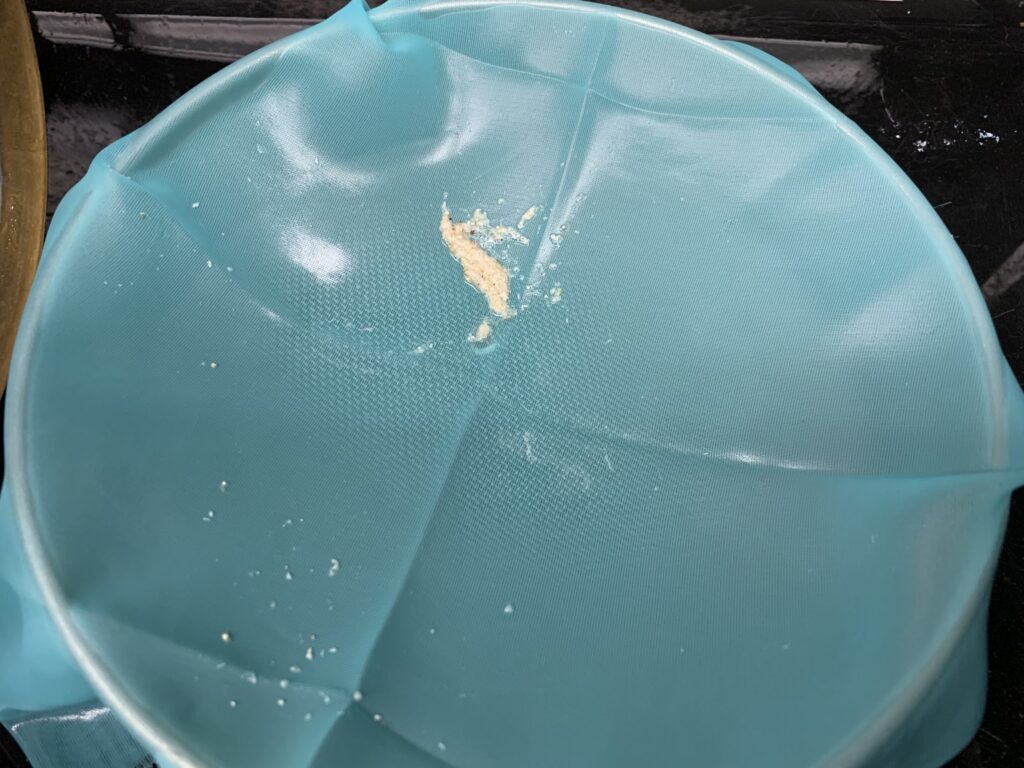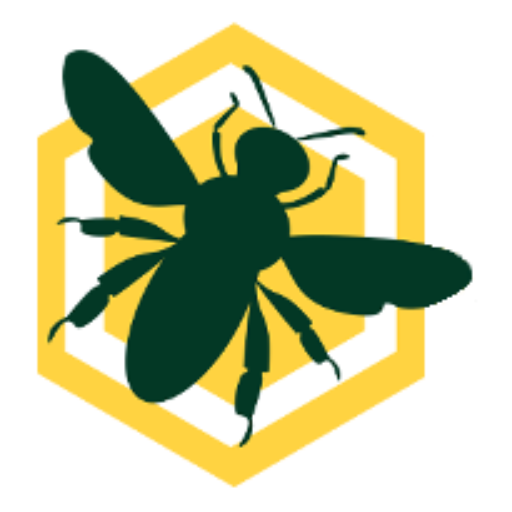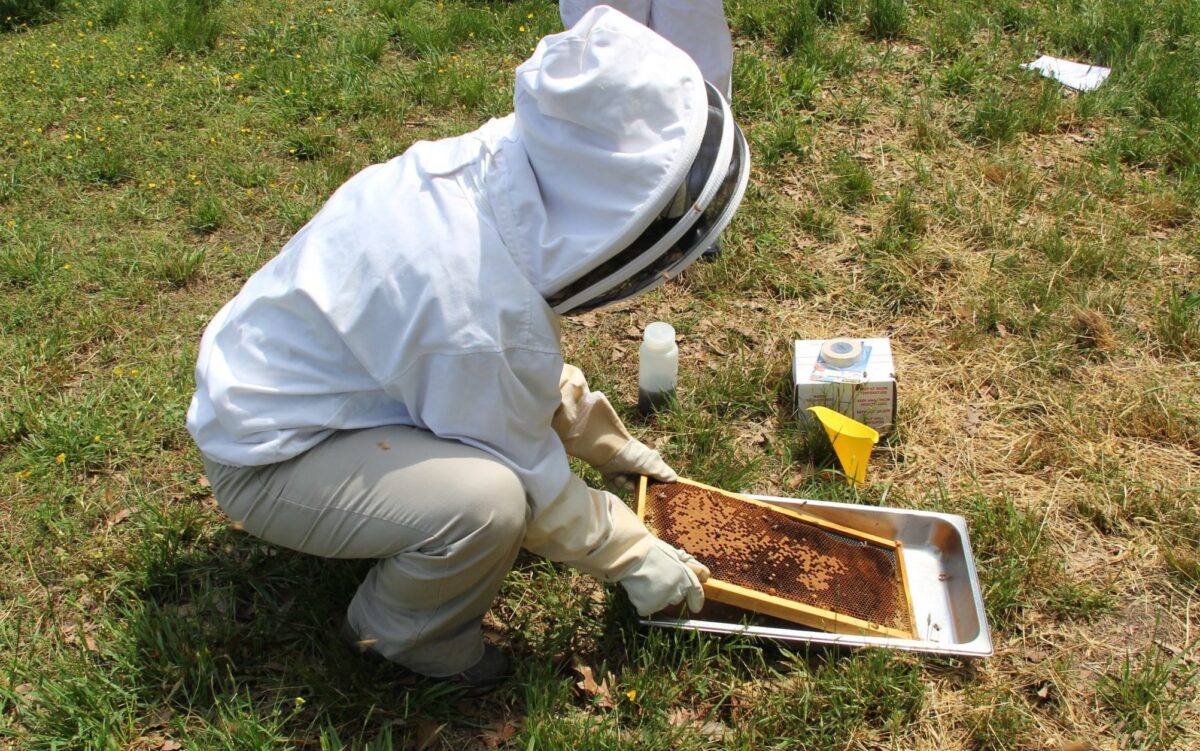The APHIS National Survey was initiated to monitor for invasive threats to the European honey bee within the US borders and territories. The Tropilaelaps mite is one of the most harmful parasites of European honey bees, and thankfully has not spread outside of its native range in Asia. One of the primary goals of the National Honey Bee Disease survey is to look for this pest, in the hopes that if we detect it, we will catch an early establishment and control its spread. Furthermore, by showing that we have surveyed for this pest and not found it, enables the US government to block importations of bees from countries that do not have a similar survey or have bee populations known to have this mite. There is a general agreement among experts that the introduction of this mite could have serious negative consequences for honey bee health and cause economic hardship for US beekeepers.
The Tropilaelaps mite is a small mite, roughly one 1/3rd the size of a Varroa mite (Figure 1). Unlike Varroa, Tropilaelaps mites can move very quickly across frames as seen in this video.

The original host to these mites is the Asian giant honey bee, but Tropilaelaps have successfully shifted hosts to A. mellifera and can be found throughout China, India, Pakistan, South Korea, Thailand, Vietnam, and the Philippines. The fact that these mites can subsist in South Korea, where the winter climate mimics the climate found in many of the US states, is concerning. It seems likely that these mites will be able to survive and reproduce quite readily in the temperate US.
There are four species of Tropilaelaps mites and they have coexisted with Varroa destructor in A. mellifera colonies in Asia over the last 50 years. Like Varroa mites, Tropilaelaps mites also can transmit viruses to their honey bee hosts. When Varroa mites and Tropilaelaps mites do coexist, Guzman points out, “…Tropilaelaps mites are considered to be the more dominating and reproductively successful parasites of A. mellifera than Varroa mites” (Guzman, et al, 2017). In practice, this means that Asian beekeepers who maintain European honey bees often treat for Tropilaelaps very aggressively and as a result do not need to treat for Varroa as Varroa populations are controlled by the frequent and aggressive Tropilaelaps treatments.
Clearly US food security is best preserved, and bee health best protected, if we can prevent their entry into the US, and, if introduced, detect the mites quickly so appropriate mediation steps can be implemented.
Like Varroa, Tropilaelaps mites reproduce in brood cells and spend some of their adult lives on adult bees. This means that monitoring methods for both mites are also similar. One can detect mites by examining debris collected from bottom boards, uncap and examine brood cells, and collect adult bees and wash them to dislodge mites. To compare these and the ability of other detection methods to detect low levels of Tropilaelaps mites, a study was conducted in Thailand where the mite is problematic for beekeepers. This study found that the most sensitive test, the test that would most likely find an infested colony, was a 24 hour mite drop (Varroa sticky board test); however, this assessment was also the most expensive, requiring twice more diagnostic time and a second visit to the yard to collect the sticky board. This makes the test impractical for a national survey. The least sensitive assessment was the adult bee wash test. The bump test was not particularly sensitive, (35% per colony) but it was quick, requiring only 5 minutes to sample and 5 minutes to diagnose. By sampling eight colonies in the same apiary, the sensitivity of our test increases and we are 97% certain that we will detect the presence of Tropilaelaps mites when 10% of the colonies in the apiary have mites. In short, we use the bump test because it is the only cost effective method with reasonable sensitivity needed to detect low-level infestations of Tropilaelaps mites.
It is important to stress the importance of finding a brood frame to make the bump and take the sample. We receive many samples where it is apparent that the frame was not “bumped” hard enough. For guidance on how forcefully to rap the frame, please revisit this training video (the “Bump” training starts at about the 5:55 mark).


It is true, that bumping too violently can kill some brood on the frame; however, considering the other methods that require opening sealed brood or alcohol washing 300 bees, this method minimizes the number of brood killed while still enabling accurate monitoring. This small sacrifice has little impact on colony performance and makes these efforts affordable.
For a video synopsis of the threats from this mite, Dr. Humberto Boncristiani does a great job here.
References:

